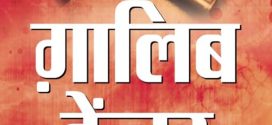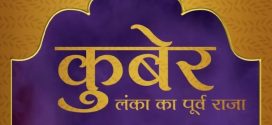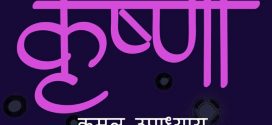Our regular readers know that we love exploring books rooted into Bharatiya culture.
Exploring the literature belong to the ancient Indian culture is our passion and we love to share it with you.
Some call it fiction, some call it mythology, some call it history, but everyone agrees that Indian civilization has the oldest books and stories preserved in different forms. Probably the tradition of telling and retelling the stories through generations kept it alive despite many calamities, invasions and other such circumstances and acts.
One such tale is of Dashavatar.
It is indeed a fascinating tale.
As per the Bharatiya culture, there are 3 superpowers (whom you may call the Gods of Gods or Holy Trinity).
Lord Brahma is responsible for the fresh creation. Lord Shiva or Mahadev is responsible for the ultimate destruction that is necessary to restart the stuff on a clean slate. And, Lord Vishnu is responsible for the management of the Universe. Thus, he is the one who takes care of the “Yoga-Kshem” of all the beings in the universe.
And, thus he has to intervene by taking “avatars” when the things need correction or guidance. That is what he clearly mentions in Gita (or Shrimad Bhagvad Gita).
यदा यदा ही धर्मस्य ग्लानिर्भवति भारत।
अभ्युथानम् अधर्मस्य तदात्मानं सृजाम्यहम्॥
परित्राणाय साधूनां विनाशाय च दुष्कृताम्।
धर्मसंस्थापनार्थाय संभवामि युगे-युगे॥
And, he keeps fulfilling his promises, always.
It is believed that Lord Vishnu needs to take 10 major avatars in a cycle of Yugas. And, they are…
मत्स्य कुर्मो वराहश्च नरसिन्होथ वामन।
रामो रामश्च क्रुश्नश्च् बुद्ध: कल्कि च ते दश:।।
Recently, we see a lot of discussions around the tenth avatar of Lord Vishnu – Lord Kalki.
| Book Title | : | कल्कि दसवें अवतार का उदय |
| Author | : | Atri Garg, Ashutosh Garg |
| Published by | : | Prabhat Prakashan ( 15 March 2021) |
| # of Pages | : | 152; 1832 KB (Kindle EBook) |
| # of Chapters | : | 14 |
| Purchase Link(s) | : |
Of course, some interpretations are sticking to the most ancient references about him and others have their own version of the story. Some of them are distorting the stories too.
We, however, are not going to compare those versions or talk about them here. Our goal is pretty simple, explore and elaborate our views on a book named Kalki: Dashven Avatar Ka Uday (Hindi Edition – कल्कि: दसवें अवतार का उदय) by authors Atri Garg and Ashutosh Garg.
This Is Here In For You
Book Cover:
As you know, the cover page is responsible for making the first impression of a book or for that matter any respective media it is associated with. And, thus it can influence a large number of book pickup/purchase decisions. Which could be materialized in reading the same, if the reader find its blurb or free content worth the same.
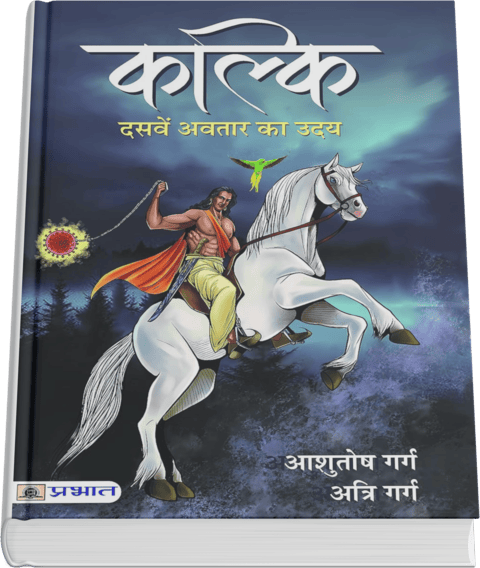
Hindi Book: कल्कि: दसवें अवतार का उदय By Atri Garg and Ashutosh Garg | Book Cover
As you can see, the cover page of कल्कि: दसवें अवतार का उदय is quite attractive.
The right combination of blue and white colors shows the vastness in the background. Perfectly suitable to show an avatar. Kalki is seen riding on his white horse – Devdutt – having his Chakra like weapon in an attacking pose. And yes, the flying bird which is shown is an important part of the tale. Really, thoughtful and “honest to the story” cover pager.
Santosh Mishra has done a wonderful job here where he received some creative inputs from Annapurna.
The Story:
Let us take a bird’s eye view of the fictional story explored in this book.
The main story starts on 28 Feb, 1919 in a village named Sambhal in India (that is Bharat), the story travels around various places in the world including Riyadh (March 1980), and returns to the starting point (Sambhal, India) in July 2005 and moves forward.
It all starts from the point when 17 years old Ramanath Trivedi is just returned from the graveyard. His father Subedar Bideshwarnath’s last rites are done and his mortal body is absorbed by the fire. Now, Ramanath needs to look after his younger sister Sujata and mother Sushila Devi.
Well, it seems that responsibilities found him quite early in life.
In order to survive, he need to accept the situation and eventually be a part of the British Army, as a soldier. Well, it doesn’t matter if you have no connection to a war; sometimes circumstances lead you to the path of destruction.
You need money not only to enjoy the life and live comfortably, but also to survive as well.
The war was brutal and it affected directly or indirectly to many settlements across the world.
Eventually we witness the life of Gaurav.
He meets a stranger who has a white horse. The stranger seems to know about generations of Gaurav’s family and becomes a friend of his.
Who was the stranger? How did he know so much? Is he really an avatar of Kalki? And, if he is, why didn’t he intervene and stopped the war, which clearly consumed a lot of innocent lives?
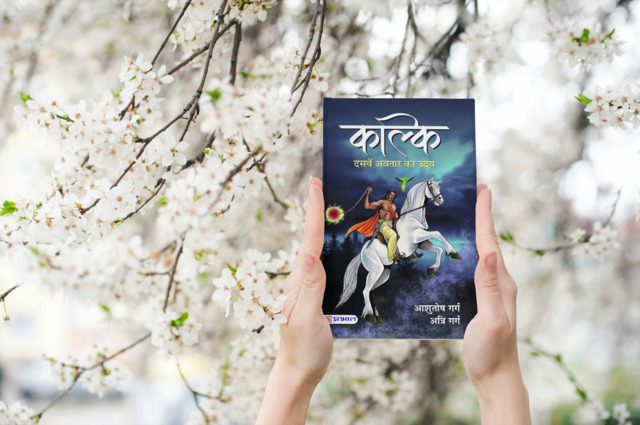
Hindi Book: कल्कि: दसवें अवतार का उदय By Atri Garg and Ashutosh Garg | Book Cover
Well, you need to read this book to know more.
Over the course of the story, you meet with विष्णुयश, सुमति, कल्कि, देवदत्त (the Horse of Kalki), रमानाथ त्रिवेदी, सुजाता, सुशीला देवी, सूबेदार बिंदेश्वरनाथ, पंडित श्यामचरण शुक्ल, शंकरनाथ त्रिवेदी, परीक्षित, शमीक, कौशल्या, गरिमा, राहुल, नीलिमा, सविता, शृंगी, and others.
Views And Reviews:
First thing first, if you are familiar with the tale of Kalki, or have read it in “Kalki Puran” or are aware with the same by any means, this book is not re-iterating the same.
It is a fictional story which is linked to Lord Kalki.
This reimagined retelling of the story, however, passes on the same message that Lord Vishnu is spreading through all his avatars. And, thus this book can be viewed as an honest effort to spread the story of Kalki avatar to (mainly young Indian) readers by adding contemporariness to the same.
The author’s decision to include a period of roughly a century in this tale is interesting. He links the major events of this timespan and how Kalki is saving the mankind by not letting “Kali” be the most powerful being.
The world wars or various pandemics (like म्यूविड as mentioned in the book, but you got the reference point here, right?) otherwise could have been fatal for us. But, we are still survived and without the Devine intervention it couldn’t have possible. And yet, we have evil beings amongst us and we need to walk on the path of Karma.
Sometimes, you may think that someone is not getting his/her due or is punished for something he/she isn’t responsible for, the theory or Karma could only be the answer.
And, that is the core message this book is trying to convey, at least, that is my understanding.
Another interesting aspect is, Ashutosh and Atri are a father-son duo. It is rare to see two generations teamed up together to pen a book. Another such case I remember is of Kartik and Ravi “Nirnal” Sharma, the authors of “DareDreamers“.
Let me quote an universal truth uttered in the book, in the simple words.
इनसान जब तक जीवित है, उसके मन से मौत का डर कभी नहीं निकलता।
And, it is not the only one, there are more such oneliners in the book.
खून बहाकर लिखा गया इतिहास, स्याही से लिखे इतिहास से बहुत अलग होता है!
— — — — — — — — — —
मित्र समर्थ हो तो साहस कई बार दुस्साहस में बदल जाता है।
— — — — — — — — — —
विवशता इनसान से झूठ बुलवाती है।
While this book is not giving the full story of Kalki (like Ramayan giving it for Lord Ram), there are some information provided.
“यह मेरा घोड़ा है!” कल्कि ने कहा, “इसका नाम देवदत्त है।”
— — — — — — — — — —
“मुझसे बड़े मेरे तीन भाई हैं,” कल्कि ने कहा, “उनके नाम कवि, प्राज्ञ और सुमंत्रक हैं।
— — — — — — — — — —
कल्कि के सबसे बड़े भाई कवि का विवाह कामकला से हुआ और उनके दो पुत्र हुए— बृहत्कीर्ति एवं बृहत्बाहु। मँझले भाई प्राज्ञ की पत्नी का नाम सुमति था। उनके भी दो पुत्र थे— यज्ञ और विज्ञ। सबसे छोटे भाई सुमंत्रक का विवाह मालिनी से हुआ था। उनके भी दो पुत्र थे, जिनके नाम शासन एवं वेगवान थे।
And, for the antagonists as well.
अधर्म और मिथ्या के संयोग से दंभ और माया का जन्म हुआ।
— — — — — — — — — —
वे दोनों सहोदर थे। फिर भी उन्होंने परस्पर संयोग किया और उससे लोभ एवं निकृति (नीचता) का उदय हुआ। लोभ व नीचता ने क्रोध व हिंसा को जन्म दिया। फिर क्रोध व हिंसा से एक क्रूर और अनाचारी राक्षस बालक का जन्म हुआ। उसका रंग काला था और वह विकराल एवं दुर्गंध से भरा था। उसका नाम कलि था।”
— — — — — — — — — —
“कलि और दुरुक्ति नाम की एक कन्या से भय एवं मृत्यु का जन्म हुआ और इन दोनों ने निरय (नरक) एवं यातना को पैदा किया।
Also, there are some other characters introduced nicely.
राजा बृहद्रथ और रानी कौमुदी की एक कन्या है, जिसका नाम पद्मा है।
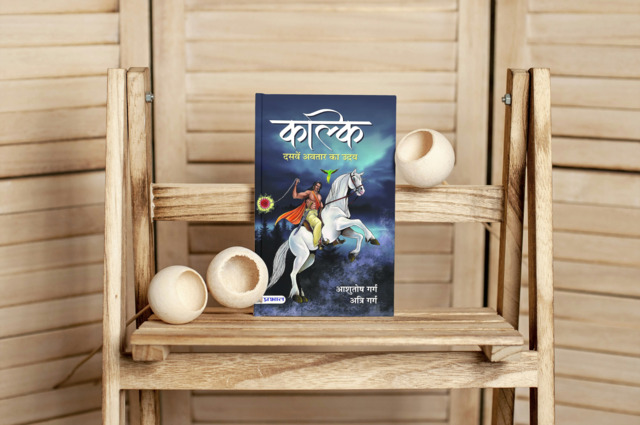
Hindi Book: कल्कि: दसवें अवतार का उदय By Atri Garg and Ashutosh Garg | Book Cover
Rather than talking too much about the following lines I simply quote them, so you can analyse them from your perspective.
राइफलें अपने भीतर से बारूद और आग उगलती हैं, लेकिन खुद ठंडी रहती हैं। खून बहाने की उनकी प्यास कभी नहीं मिटती।
— — — — — — — — — —
इनसान बात को सिर्फ इसलिए सुनते हैं कि उन्हें बदले में कुछ कहना होता है। उन्हें बोलने की हमेशा जल्दी रहती है
— — — — — — — — — —
“विनाश से पहले और उसके बाद की शांति में अंतर होता है। दोनों की आहट भी अलग होती है। कई बार व्यक्ति समझ नहीं पाता कि जीवन में आई शांति विनाश से पहले की है या बाद की!”
— — — — — — — — — —
विज्ञान ने मनुष्य को पंख दिए, तकनीक ने उनमें साहस भरा और अब हम अपनी प्रतिभा द्वारा संभावनाओं के अनंत आकाश में उड़ान भरने को तैयार हैं।
— — — — — — — — — —
हमें याद रखना होगा कि यह सृष्टि मनुष्य के बनाए हुए नियमों से नहीं, बल्कि प्रकृति और ईश्वर के सिद्धांतों के अनुसार चलती है।
— — — — — — — — — —
पेड़ की शाखाओं में नई कोंपल फूटने से लेकर सृष्टि में होनेवाले निर्मम विनाश तक— सबकुछ ईश्वर की इच्छा और उसकी दिव्य योजनाओं का ही परिणाम है। मनुष्य को जो समझ में नहीं आता, वह उसे अपनी संकुचित बुद्धि और सीमित बोध के चलते ‘संयोग’ का नाम देता है।
— — — — — — — — — —
“हमें जीवन की लड़ाई स्वयं लड़नी होती है। हमारे साथ चलनेवाले लोग अपने- अपने बाहरी और भीतरी संघर्षों से जूझ रहे होते हैं। उनसे अपेक्षा रखना खुद को कमजोर करना है।
— — — — — — — — — —
7 जनवरी, 1919 मुझे कल्कि से पूछना था कि मैंने जो स्वप्न देखा था, वह सत्य था या उसमें भी कोई रहस्य छिपा था? मैंने तुरंत अपने कुरते का कोना पकड़ा और उसमें एक छोटी- सी गाँठ बाँध ली। यह किसी बात को याद रखने का अच्छा तरीका माना जाता है। व्यक्ति कपड़े के कोने में लगी गाँठ देखता है तो उसे वह काम तुरंत याद आ जाता है, जिसे सोचकर गाँठ लगाई गई थी।
As our regular readers know that we quote the lines from the book, so you, yourself can get the idea about the quality of writing in the book and whether it suits your reading preferences. And, by now, I guess, you must have got a fair idea about this book.
This book has some typos (Eg: इनसान), but, I don’t think they will affect your reading experience much.
Summary:
Overall, an interesting reimagined tale of Kalki, with contemporariness. The good thing about this book is, it is not distorting the details mentioned in ancient Indian scriptures.
ThinkerViews Rating:
Around 7.5 stars out of 10.
Quick Purchase Links:
- Buy - कल्कि by Atri Garg, Ashutosh Garg - Paperback - Amazon IN
- Buy - कल्कि by Atri Garg, Ashutosh Garg - Kindle EBook - Amazon IN
- Buy - कल्कि by Atri Garg, Ashutosh Garg - Paperback - Amazon US
- Buy - कल्कि by Atri Garg, Ashutosh Garg - Kindle EBook - Amazon US
Over To You:
If you already have read the book do share your remarks and thoughts via comments below. Does this review help you in making your decision to buy or read the book? Do not forget to share this article with your friends over various social networks. Please follow/subscribe us on various Social networks like Twitter, Facebook, YouTube, Spotify, Amazon Prime Music, Audible, and others. And yes, you may like to subscribe to our RSS feeds to get latest updates for the site to land right in your mail box.
 ThinkerViews – Views And Reviews Personal views and reviews for books, magazines, tv serials, movies, websites, technical stuff and more.
ThinkerViews – Views And Reviews Personal views and reviews for books, magazines, tv serials, movies, websites, technical stuff and more.

